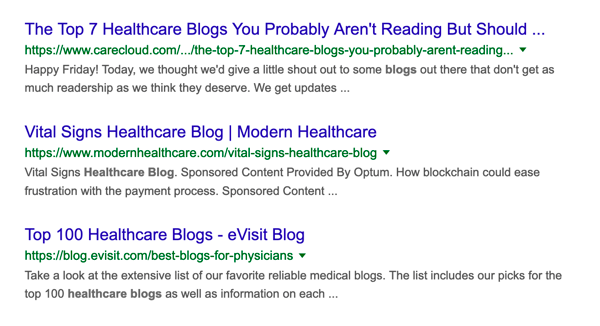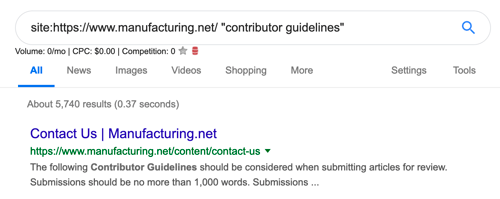
How to Get Your Guest Blog Published on Third-Party Sites that Actually Matter

By now, the digital marketing world has accepted that creating high-quality content on your own website is a necessary part of building your brand online. But as more and more businesses get into the content marketing game — 87 percent of B2B businesses as of 2018 — making sure your audience actually finds the content you create has become a bigger challenge than creating great content to begin with.
Guest blogging is a popular way to promote your brand’s content for a few compelling reasons:
- Publishing a post on a popular blog in your industry is a way to reach a new, relevant audience.
- It’s a good way to build relationships with influencers.
- It’s a legitimate way to earn links back to your website, one of the most important parts of a good search engine optimization (SEO) strategy.
When done well, the benefits of guest blogging are significant. But an effective guest blogging strategy requires overcoming two big challenges: Finding websites worth blogging for that accept guest posts and convincing them to publish your work.
Here’s how to tackle those challenges and earn guest posts that will help you achieve your business goals.
How to Find Blogs for Guest Posting that Are Worth the Time
Lots of blogs accept guest posts, but you don’t want to put the work into pitching and creating a post for just any blog. You want one that’s relevant to your industry and that has enough influence to be worth your time. There are three important steps to finding those blogs.
1. Define your criteria.
For most businesses, your criteria for deciding a guest blog is worthwhile will be some combination of:
- Relevance - If you sell pacemakers, seeking a guest post on a blog focused on financial literacy doesn’t make much sense. You’d want to find blogs that talk about medical issues and health. That said, the blogs you target don’t always have to be directly about what you do. In this example, a blog focused more generally on senior issues can be relevant, since it shares the brand’s target audience.
- SEO value - If SEO is a priority in your link building strategy then you need to make sure the blogs you consider will pay off in your SEO efforts. While building backlinks is a big part of SEO, links on low-quality sites can actually hurt rather than help you. Check a website’s domain authority to figure out if it’s worth your time. And find out if the links in the blog posts they publish are no-follow or do-follow — no-follow links won’t help you build the SEO authority of your website. A number of SEO tools, including some free plug-ins will help you spot which links on a site are no-follow.
- Exposure value - Even if you care about SEO, some sites that only offer no-follow links may be worth your time if they provide enough exposure value. Some websites openly publish the number of readers and email subscribers they have, which makes it easy to figure out how many people your post will reach. In other cases, you’ll have to do more digging by seeing how many followers they have on social media or using marketing tools that provide traffic estimates.
 For each category, define your standards for what makes a blog post worth it. If you’re building a long-term guest posting strategy, set a few priority levels to guide you in which opportunities to seek out first, and which may be worth it down the line.
For each category, define your standards for what makes a blog post worth it. If you’re building a long-term guest posting strategy, set a few priority levels to guide you in which opportunities to seek out first, and which may be worth it down the line.
2. Make a list of all the relevant blogs you can find.
Create a spreadsheet that includes the criteria you defined in Step 1 and start searching for as many blogs relevant to your industry and audience you can find. This will be harder in some industries than others. There are more blogs focused on health than topics like manufacturing, so you may have to get creative if your brand is niche.
Start by making a list of all the blogs you already know and follow in your industry. Then turn to Google. Search for keywords relevant to your brand with the word “blog” added after them. For example, if searching for healthcare blogs, start with a broad term like “healthcare blog” and move to long-tail keywords like “heart health blog.” Google will deliver individual blogs in your search, along with helpful lists that collect a lot of industry blogs into one place.  To build out the list further, head to social media. Follow the brands already on your list and the individuals writing for them, and pay attention to the blogs they share and link to. Do the same for influencers you know in your industry. Any time a blog post they share is from a relevant source, add it to the list.
To build out the list further, head to social media. Follow the brands already on your list and the individuals writing for them, and pay attention to the blogs they share and link to. Do the same for influencers you know in your industry. Any time a blog post they share is from a relevant source, add it to the list.
3. Research which sites accept guest posts.
Now that you have a long list, start narrowing it down based both on your original criteria and which blogs accept guest posts. The easiest place to start is to see if a blog has a guest post submissions page. Do a site search with phrases like:
- “Submission guidelines”
- “Contributor guidelines”
 A blog with guidelines will be the most likely to respond to a pitch since they’re actively soliciting guest post submissions. But even if you don’t turn up anything there, try a site search for “guest post” to see if they’ve published posts from outside contributors before. If they have, you may still have a chance if you can track down the best person to contact.
A blog with guidelines will be the most likely to respond to a pitch since they’re actively soliciting guest post submissions. But even if you don’t turn up anything there, try a site search for “guest post” to see if they’ve published posts from outside contributors before. If they have, you may still have a chance if you can track down the best person to contact.
How to Get Your Guest Post Accepted
The most valuable blogs you identify likely already receive a lot of guest post pitches. Their editors are busy and will only bother with the best of them. Dani Hao, the Head of Communications at Procurify, which has a blog that covers finance and startup topics and gets 50-80 guest post submissions a month, says only three to five posts make it to print. Here’s how to be one of the successful ones.
1. Spend time researching the blog.
Know your audience. In this case, that’s the blog you’re pitching. Dani says one of the main things that sets good pitches apart from the bad is that “they do the right research.”
“I'm not talking about a simple Google search and backlink-type research, but they go look at who our customers are, they understand our voice and tone and they reference a few past published articles that have done well.”
Spend some time actually reading the blog you plan to pitch. Make sure you know:
- Who their target audience is. Your pitch needs to appeal to them. And besides, you want to make sure their target audience overlaps with yours for your efforts to be worth it.
- The general style and tone of the blog. Replicate this in your pitch to show you understand it.
- What content’s successful. Pay attention to which blog posts have the most shares and comments. If the blog has a “Most Popular” or “Trending” sidebar, start there.
- The submission guidelines. It sounds like basic advice, but a lot of people who pitch popular blogs fail to read and follow the submission guidelines. Read it before you write your pitch, then again before you send it to make sure you didn’t miss anything. Some guidelines will include specific instructions to weed out people who didn’t read them, such as telling you what to name your pitch email.
2. Cultivate a relationship.
A good enough pitch may get you a response even if the person reading it has never heard of you, but your chances increase if you’re already on their radar. As soon as you have your list of target guest blogs, create a strategy for interacting with them.
Follow them on social media and reply to the updates they post. Share their stuff across your networks. And comment on the blog by adding something of value (if comments are allowed). Don’t just do this for the brand accounts for the blogs, do it for the editors and writers, too.
Having a previous relationship isn’t required for a successful guest post pitch, but it helps enough to be worth the work it takes — especially for the highest priority blogs on your list.
3. Brainstorm a strong pitch.
Coming up with blog topics is a constant challenge in content marketing. If you can help your target blog with a great idea for their audience, they’ll have a good reason to say yes.
And it’s a good way to set yourself apart. According to Dani, most of their pitches are from people who want to contribute but don’t provide topic ideas. And even after they email back asking for pitch ideas, the would-be contributors only send a portfolio.
Providing a strong idea puts you ahead of the pack. To make sure your pitch is strong:
- Make sure it’s relevant to their audience and the topics they cover.
- Also make it relevant to what your business does — it has to serve your goals as well.
- Do a search of their archives for your topic idea to make sure you’re not pitching something they’ve already covered before.
While Dani prefers an email that includes a pitch, she also says it’s OK to start by asking what they need. “Don't be afraid to simply ask the editor for their content calendar or their focuses for the month,” she says. It’s a way to get your foot in the door and increase the chance that your pitch is relevant to their current needs.
4. Write an amazing blog post.
Getting a “yes” to your pitch is a big deal, but it doesn’t mean you’re done. You have to write a post that’s worthy of the blog. Make sure it’s well-written and reflects the blog’s style. And make it stronger with data and examples.
“The best submission pieces we get have reputable references and data from other articles or studies,” says Dani. Back up your claims with statistics wherever possible, and consider seeking expert sources or case studies to illustrate the points you make.
Most blogs that accept guest posts know that writers are hoping to get a link. Unless their guest post submissions say otherwise, it’s usually OK to include a link in your guest post to a piece of your content, but don’t overdo it. The link has to be included naturally in the text, not shoehorned in. And don’t fill the piece with brand mentions and links. If it’s overly promotional, you’ll get rejected, not to mention the fact that Google doesn’t appreciate gratuitous promotional linking.
Get the Most Out of Guest Posting
Earning a guest post on a popular, relevant blog is a success worth celebrating. It’s competitive and hard. Once you pull it off, take steps to get more from it by helping to promote the piece. Share it with your audience on social and in your email marketing. Reply to any comments your blog post gets. And solidify your relationship with the blog and its editor by keeping in touch. Establishing a new relationship is one of the biggest benefits of getting a guest post — and could make it easier for you to get the next one.




